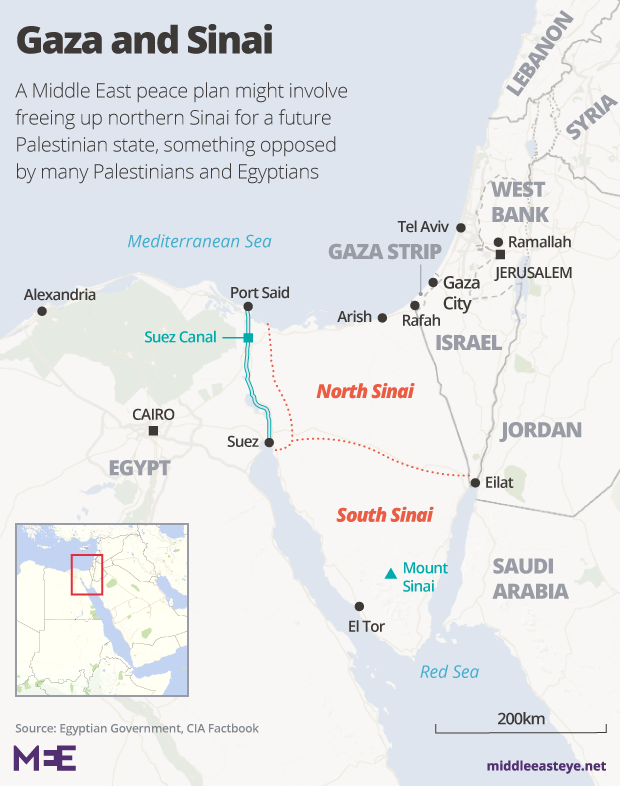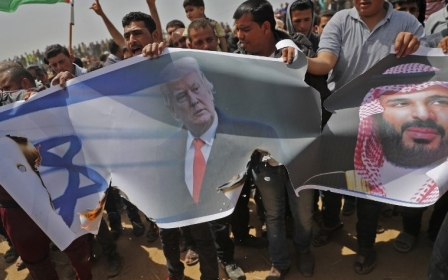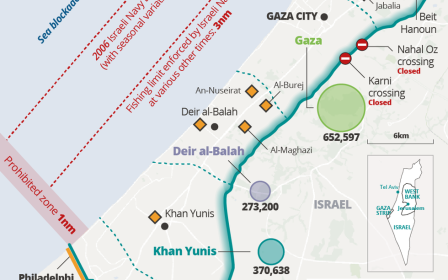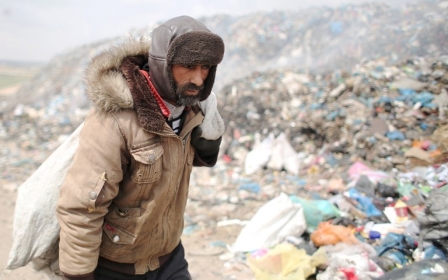Why Hamas-Israel truce agreement threatens Palestinian unity
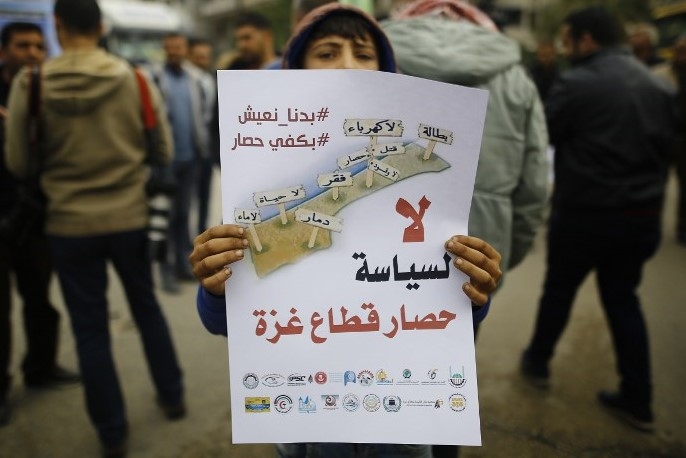
Last week The Islamic Resistance Movement (Hamas) and Israel issued statements announcing a breakthrough in Pan-Arab efforts to broker a comprehensive ceasefire agreement between the two parties. Even as Israel launched a fresh round of attacks on civilian areas in Gaza in recent days, the Egyptian and Qatari mediated talks have continued to gain momentum, with the escalation described as an effort by Israel to emerge dominant in the negotiations.
The proposed agreement was prompted by international calls to restore calm following months of protests near the fence separating Gaza from Israel in which thousands of Palestinians were wounded and killed. But leaked details of the deal, which has been pushed by the White House and UN envoys in the region, point to longer term objectives.
Widening the gap
A broader peace agreement between Gaza and Israel aims to establish mechanisms for dealing with the enclave that are separate from the rest of the Palestinian territories in the West Bank in order to make Gaza more manageable for Israel.
The failure of the Palestinian Authority (PA) to end the political division with Hamas and take control of Gaza helped give momentum to the initiative. This paved the way for shifting the international community’s mediation agenda away from achieving internal Palestinian unity to brokering a bilateral Hamas-Israeli truce agreement, thus widening the diplomatic rift between the rival factions and consolidating the fragmentation of Palestinian territories.
The absence of any talk about Palestinian unity means that Hamas will not only continue to operate in Gaza but that Gaza’s present administration, which is mostly composed of Hamas bureaucrats, will assume responsibility for managing relief programmes
To solidify the administrative divide between the two areas (Gaza and the West Bank), architects of the deal have proposed easing the joint Israeli-Egyptian blockade on Gaza and establishing economic projects in the strip and along Egypt's border, creating a contiguous economic area with North Sinai to serve Gaza residents, which would effectively render it a separate entity from the West Bank.
End of blockade
According to official sources, the deal stipulates an end to Hamas' armed activity in Gaza on the condition that restrictions on Gaza’s borders be removed. The agreement would bring an end to the blockade that has devastated Gaza's economy and led to a humanitarian crisis with shortages of water, electricity and medicine.
It proposes reopening the Rafah border crossing between Gaza and Egypt immediately -and continuously- for the movement of people and goods. The Karni commercial crossing between Gaza and Israel would be opened for import and export trade. Billions of dollars in donor aid are to be invested in projects aimed at rebuilding Gaza's economy if the deal goes through.Another key component of the plan is the execution of economic and infrastructure projects in Sinai to support Gaza's economic recovery, breaking the territory's attachment to the PA in the long term. This includes building air and sea ports, as well as a power station to provide residents with much needed electricity.
Hamas leaders would need to show a clear intention to establish a peaceful relationship with Israel and neighbouring Egypt in order for aid and investment funds to flow
In return Israel has demanded that negotiations for a prisoner exchange deal, that would see the return of Israeli citizens and the bodies of soldiers held by Hamas, are to begin immediately as part of the agreement.
More significantly, the absence of any talk about Palestinian unity means that Hamas will not only continue to operate in Gaza but that Gaza’s present administration, which is mostly composed of Hamas bureaucrats, will assume responsibility for managing relief programmes.
While Gaza won’t be completely demilitarised, Hamas leaders would need to show a clear intention towards establishing a peaceful relationship with Israel and neighbouring Egypt in order for aid and investment funds to flow.
Depoliticising economic development
Critics of the agreement, familiar with the efforts of the White House in preparing the "deal of the century" have noted that the expectation by mediators is for extensive economic relief to work towards pacifying the Gaza Strip on a permanent basis.
Beholden to external donors, Gaza would be granted only limited self-governance, and will be forced to accept further conditions and restrictions imposed on the territory by Israel to avoid the prospect of a return to Israel's policy of siege and repression. Israel would retain ultimate control over Gaza's economy, natural resources, airspace, territorial waters and border crossings while remaining uninvolved in Gaza’s rehabilitation.
Thus while Israel will be allowed to continue its occupation of Gaza, it can continue shirking all legal responsibility for the welfare of its inhabitants and robbing them of their right to live in freedom and justice.
The isolation of Gaza by PA leaders facilitates this erosion of Palestinian rights. Removed from PA territory, residents are less likely to continue viewing their interests as part of the wider Palestinian situation, bringing Palestinians even closer to a reality that consolidates their divisions, transforming it into a permanent separation.
Unravelling the PA's statehood strategy
From the early stages of negotiations PA leaders have vehemently rejected the push for a truce agreement between Israel and the Gaza Strip, believing a deal which bypasses the Palestinian leadership would destroy any prospects for the emergence of an independent Palestinian state in Gaza and the West Bank.
But even if Gaza were to return to being under the PA's Fatah-led umbrella, prospects for Palestinian statehood have already been severely undermined by Israel's move on East Jerusalem and continued annexation of Palestinian land for settlement construction. As it stands the status quo does not meet the minimum demands for an independent state with full sovereignty over territories occupied in 1967 and with East Jerusalem as its capital.
Further challenging the PA's statehood argument, Ramallah has done little to change present dynamics between the feuding Palestinian factions or to confront Israel's occupation measures in Gaza. Under the leadership of Mahmoud Abbas, the PA actively obstructed Egyptian sponsored reconciliation agreements signed in October 2017. Since then efforts to integrate Gaza back under PA rule have come to a standstill.
It has become clear therefore that the main concern of the Ramallah leadership is not with the realisation of statehood, but with the notion that implementing the long-awaited agreement and creating a separate political entity in Gaza, the PA face becoming obsolete among a sizable portion of the Palestinian population.
The fact that Hamas received the support of moderate Arab states to move the peace process forward even without Abbas and the Palestinian leadership in Ramallah has only increased the sense of threat among PA officials.
The need to restore Palestinian unity
Though it remains to be seen whether the truce deal will fundamentally alter the status quo, it is becoming increasingly evident that Palestinians must begin thinking outside the framework of statehood if they are to continue the battle to end the occupation and gain both their political as well as their economic rights.
The only way to end the Palestinian division and secure PA control over Gaza is to adopt an approach that deprioritises factional interests, unifies efforts among political forces to oppose the occupation and puts the national interests of the Palestinian people in view.
This begins by ending the PA’s conflict with Hamas in Gaza, removing punitive measures off the territory and taking serious steps towards confronting the occupation and siege imposed on the Gaza Strip. Standing up to western demands for Hamas to relinquish its weapons in order to advance national dialogue would go far towards sending a message of Palestinian unity to the outside world.
A unified, empowered Palestinian leadership which is representative of all groups and factions will be better equipped to manage the humanitarian and economic crisis in Gaza, improve the economic conditions of Palestinians living there, and solidify the status of Gaza as an extension of the West Bank, towards a more just solution to the Palestinian issue.
- Safa Joudeh is an independent journalist and a PhD candidate in development studies at SOAS University of London. She is a policy member of Al-Shabaka, the Palestinian Policy Network. On twitter: @SafaJoudeh
The views expressed in this article belong to the author and do not necessarily reflect the editorial policy of Middle East Eye.
Photo: A Palestinian child holds a poster during a protest against the siege on the Gaza Strip, on 6 February, 2018 in Gaza City (AFP).
This article is available in French on Middle East Eye French edition.
New MEE newsletter: Jerusalem Dispatch
Sign up to get the latest insights and analysis on Israel-Palestine, alongside Turkey Unpacked and other MEE newsletters
Middle East Eye delivers independent and unrivalled coverage and analysis of the Middle East, North Africa and beyond. To learn more about republishing this content and the associated fees, please fill out this form. More about MEE can be found here.



